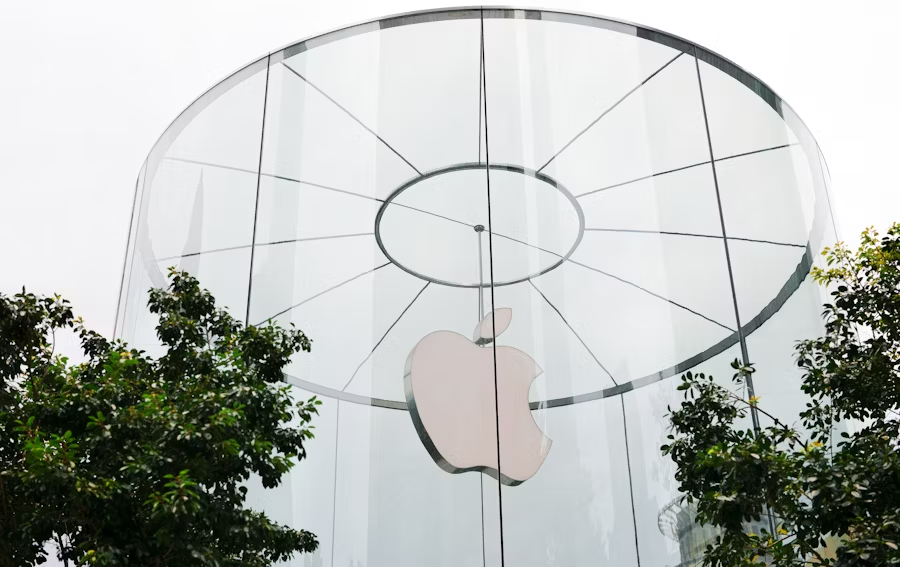The $55 Billion Question: What Apple's China Strategy Means for Equipment Buyers
Diagon Team
Published on 7/15/2025

When Apple invests $55 billion annually in Chinese manufacturing, it's not just about iPhones. It's a masterclass in how global equipment sourcing has fundamentally shifted—and why US manufacturers need to pay attention.
Financial Times journalist Patrick McGee, author of "Apple in China," recently joined our co-founders Will Drewery and Greg Smyth on the Movers and Makers podcast to unpack a sobering reality: the student has become the master in global manufacturing.
Listen to the full episode:
The Scale That Changes Everything
McGee shared a data point that stops you in your tracks: Apple ships more than 2 million products every single day. Break that down further—a million iPhones daily, each with a thousand components—and you're looking at a billion components moving through the supply chain every 24 hours.
"I don't know that there's any American companies that can keep up with that pace for any of the components, let alone the whole enchilada," McGee observed.
This isn't just about volume. It's about an industrial ecosystem that took 30 years to build and can't be replicated overnight—or perhaps at all.
China Speed: From Dirt to Production in 10 Months
Greg Smyth lived this reality firsthand. As one of the first supply chain people on the ground for Tesla's Shanghai factory, he witnessed something extraordinary: "In December, they were clearing dirt. Less than 12 months later, cars were rolling out that were arguably better than what we were building in the US."
This "China speed" isn't just about construction timelines. It's about:
- PhD-level engineers in traditionally blue-collar fields like tool and die
- Supplier eagerness to work with Western brands
- Government coordination that can literally move mountains
- An invisible hand that removes roadblocks before you even see them
The Equipment Sourcing Reality Check
For equipment buyers and procurement teams, McGee's insights reveal uncomfortable truths about the current state of manufacturing capability:
The Talent Gap: "There's football stadiums of industrial engineers there where there's like 50 in the US," Greg noted, echoing Tim Cook's famous observation. Chinese tool and die shops don't just have skilled workers—they have PhDs driving innovation in manufacturing processes.
The Scale Challenge: When you need to hire 25,000 workers per month just to maintain operations (as one Apple supplier does), or when your standing workforce is 100,000 people with 6% weekly attrition, you're operating at a scale that's simply not replicable in the US.
The Innovation Shift: Perhaps most concerning for US competitiveness: Chinese suppliers are no longer just executing Western designs. They're improving them. As McGee revealed, Chinese suppliers working on Tesla's Optimus robots have cut costs so dramatically that Tesla doesn't bother suspending shipments despite hefty tariffs.
What This Means for Your 2025 Equipment Strategy
The conversation revealed three critical considerations for equipment procurement:
1. The 70% Reality
As our team knows from daily experience in the equipment marketplace, approximately 70% of US factory equipment comes from overseas. This isn't changing anytime soon, regardless of political rhetoric or tariff policies.
2. The Ecosystem Effect
You can't just transplant a single factory or production line. McGee emphasized that even if you could build "an imaginary machine where you literally just put the inputs in and iPhones come out," all those inputs—minerals, machinery, robotics—are still being refined in China.
3. The Humanoid Distraction
Both hosts and McGee expressed skepticism about humanoid robots as America's manufacturing savior. If these robots are designed and built in China (as Tesla's Optimus increasingly is), then imported to work in US factories, have we really solved our competitiveness problem?
The Path Forward: Strategic Realism
McGee's book and our conversation point toward a future where US manufacturers need to be strategically realistic about their equipment and supply chain decisions:
- Accept the interdependence: The golden age of US design and Chinese manufacturing has created dependencies that can't be unwound quickly
- Focus on capability building: Instead of trying to replicate everything, identify critical capabilities that must be developed domestically
- Think ecosystem, not isolation: Success requires building industrial clusters and supplier networks, not just individual factories
The Reshoring Reality
"Reshoring needs a rebrand," as Greg often says. It's not about bringing back the factories of the 1950s. It's about building strategic capabilities for the future while acknowledging the realities of global supply chains.
For equipment buyers planning 2025 investments, the message is clear: understand where your equipment comes from, why it comes from there, and what that means for your long-term competitiveness. The era of simple solutions is over.
Listen to the full conversation with Patrick McGee:
About Patrick McGee: Patrick McGee is a Financial Times journalist and author of "Apple in China," examining how Apple became dependent on Chinese manufacturing infrastructure. As the Financial Times' Apple beat reporter from 2019-2023, McGee covered global supply chain dynamics and US-China trade relationships. His investigative work earned him the San Francisco Press Club Award in 2023. "Apple in China" has been recognized by The Economist as one of 2025's top 40 books.
About Movers and Makers: The Movers and Makers podcast explores the future of manufacturing and supply chain innovation. Hosted by Diagon co-founders Will Drewery and Greg Smyth, the show covers factory-building strategies, manufacturing processes, and market insights.
Subscribe to Movers and Makers:
Have questions about equipment sourcing or want to explore available options? Contact our team to discuss your 2025 procurement strategy.